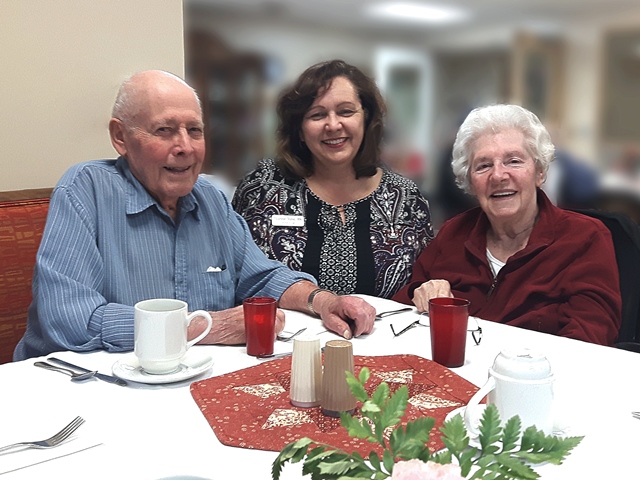By Drew Tapley
Dorothy Weppler moved into Barnswallow Place in Elmira, Ontario, with a gastrointestinal feeding tube in her abdomen. It had been in place following a stroke in January last year which left one side of her body immobile, and was active for 16 hours every day.
This seemed excessive to Dianne Tone, the Director of Care.
“The tube was feeding her continually, and essentially gave her no freedom whatsoever,” said Dianne. “Stroke recovery can be quite lengthy, but we felt it was inappropriate for somebody to be on a G-tube for 16 hours every day.”
She wanted to change the approach, and held discussions with Dorothy’s family.
“After leaving hospital, my mom moved into a stroke rehab centre, where they told me she would be dead in a few months because that’s how long people lasted on a feed tube,” said Gary Weppler, Dorothy’s son.
“I fought to get her relocated to Barnswallow Place in September 2017 so she could be with my father, who lives there. Once I got her there, Dianne asked me why she was on a feeding tube. She didn’t understand why my mother couldn’t eat. I said that I’ve no idea, and she responded, ‘Well, we’re going to find out, and would like to try something to increase the feed rate and slow down the timeframe.’”
Dianne consulted with Barnswallow’s registered dietitian, Lillian Lau, the nursing team, and a speech and language pathologist (SLP). Dorothy’s tube-feed was bulked and the hours required for the feed were shortened, allowing her more freedom. They gradually started feeding her orally and decreasing the volume of feed. It started with pureed oatmeal and Cream of Wheat for breakfast, and graduated to lunch with a goal of having her eat Christmas dinner.
When Christmas rolled around, she achieved that goal. Dorothy and her husband Lorne were able to enjoy a Christmas dinner together. Her meal was pureed roast turkey, mashed potatoes, dressing and peas, and she ate most of it.
“When she had the tube-feed in place, Dorothy was always saying how she wanted to eat again,” said Lillian. “So she is really happy about the progress she has made.”
Lillian has been actively involved in Dorothy’s care from the start. Alongside the SLP, they worked with Dorothy to trial different textures and physical techniques to help her swallow better. During these assessments, Dorothy’s 90-year-old husband, who is cognitively well and acts as her power of attorney, was always present.
Her meal plans are based around what is offered at the care community and what is appropriate, inclusive of her food preferences.
At 89, Dorothy is now tube-free and partially recovered. Her mental status is fairly good, and she is receiving physiotherapy to help her stand and pivot. She has been able to carry on a conversation from the day she arrived at Barnswallow Place, which is owned by Sienna Senior Living. This is what led Dianne and the rest of the care team to move ahead the way they have been doing.
“I expected that I’d be walking into this little lady in bed who was not really communicative,” shared Dianne. “I said, ‘Hi, Dorothy. How are you today?’ And she replied, ‘I’m great! I’m glad to be here.’ Obviously, if someone is talking like that, they are swallowing their saliva and you could assume they would be able to move forward.”
After 67 years of marriage together, Gary admits that his parents’ lives are never going to be the same as when they lived in their own home. But as an only child, what is most important to him and what he is most grateful about, is that he still has them.
Drew Tapley is a Writer at Sienna Senior Living.


